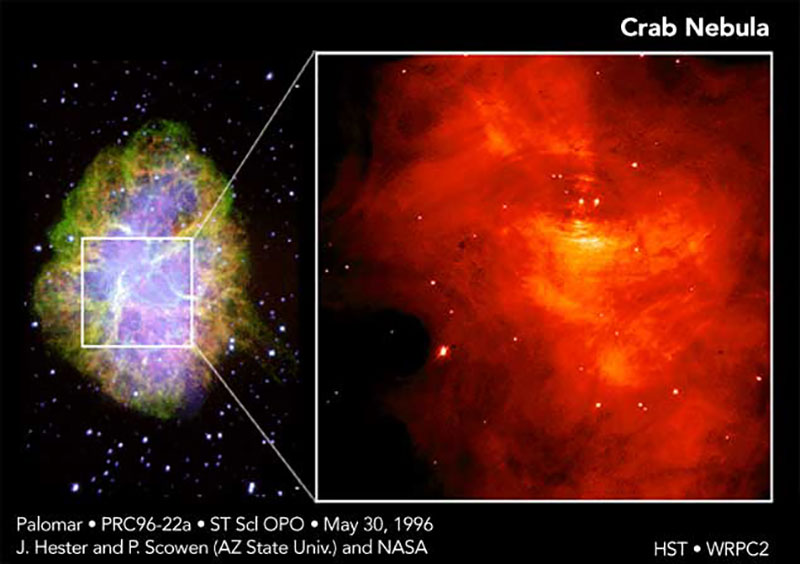Nebula
Star Cycle – Birth and Death of a Star
The star cycle starts with a nebula or large cloud of gas that collapses under its own gravity to form a star. A stable star such as the Sun steadily generates heat and light through nuclear fusion. Such a star is said to be in its main sequence. The main sequence phase ends when most of the hydrogen in its core has been converted to helium and fusion begins around the core thereby generating and expanding luminosity beyond the core, at which point it becomes a red giant. When the red giant begins to cool at its center, the red giant collapses to form a dwarf star, referred to as a white dwarf because it glows almost white as it cools. If a very large red giant begins to cool or attracts matter from a nearby star, a violent explosion or supernova can occur.
A nebula is the swirling gas surrounding an early star (i.e. the Sun) during the epoch of a solar system’s formation.The colorful photo below left shows a ground-based image of the entire Crab Nebula, the remnant of a supernova explosion witnessed over 900 years ago. The nebula, which is 10 light-years across, is located 7,000 light-years away in the constellation Taurus.

Crab Nebula
The green, yellow and red filaments concentrated toward the edges of the nebula are remnants of the star that were ejected into space by the explosion. At the center of the Crab Nebula lies the Crab Pulsar — the collapsed core of the exploded star. The Crab Pulsar is a rapidly rotating neutron star — an object only about six miles across, but containing more mass than our Sun. As it rotates at a rate of 30 times per second the Crab Pulsar’s powerful magnetic field sweeps around, accelerating particles, and whipping them out into the nebula at speeds close to that of light. The blue glow in the inner part of the nebula — light emitted by energetic electrons as they spiral through the Crab’s magnetic field — is powered by the Crab Pulsar. The picture below right shows a Hubble Space Telescope image of the inner parts of the Crab. The pulsar itself is visible as the left of the pair of stars near the center of the frame. Surrounding the pulsar is a complex of sharp knots and wisp-like features. This image is one of a sequence of Hubble images taken over the course of several months. This sequence shows that the inner part of the Crab Nebula is far more dynamic than previously understood. The Crab literally “changes it stripes” every few days as these wisps stream away from the pulsar at half the speed of light. The Hubble Space Telescope photo was taken Nov. 5, 1995 by the Wide Field and Planetary Camera 2 at a wavelength of around 550 nanometers, in the middle of the visible part of the electromagnetic spectrum. Credit: Jeff Hester and Paul Scowen (Arizona State University), and NASA.
